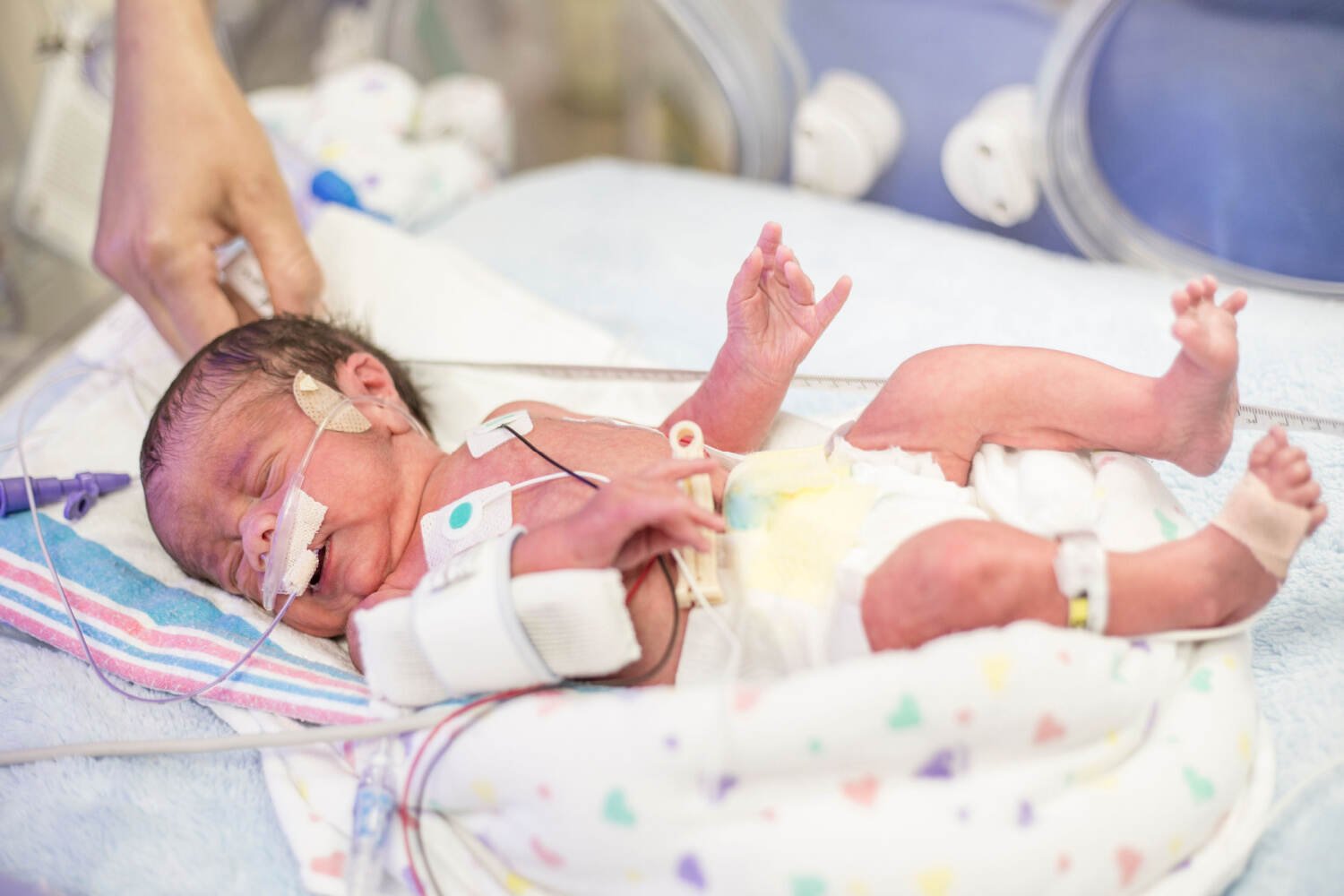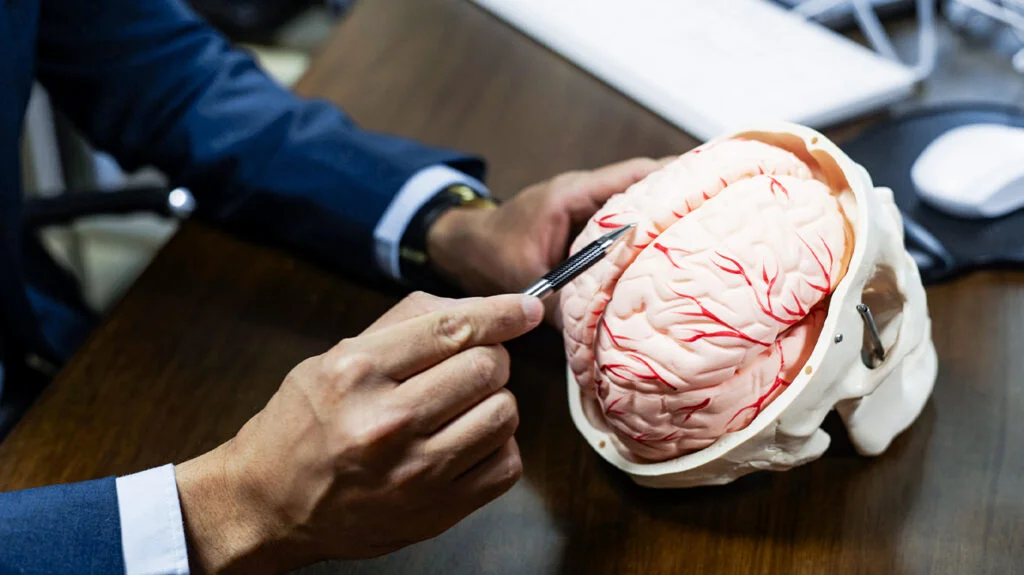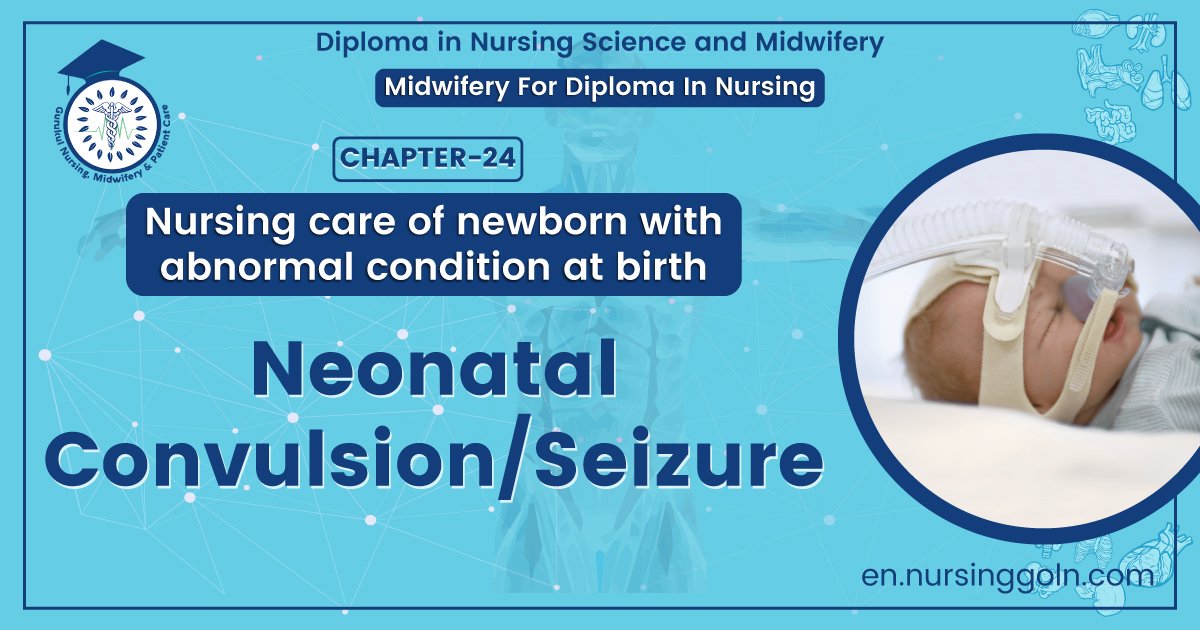Neonatal convulsion/seizure – This course is designed to understand the care of pregnant women and newborn: antenatal, intra-natal and postnatal; breast feeding, family planning, newborn care and ethical issues, The aim of the course is to acquire knowledge and develop competencies regarding midwifery, complicated labour and newborn care including family planning.

Neonatal convulsion/seizure
Seizure
A seizure is the clinical manifestation of an abnormal excessive paroxysmal electrical discharge from the brain. This electrical discharge is conducted to the body and produces a seizure.
[Ref-IAP Text Book of Pediatrics/5th/339]
Or
A seizure is a sudden surge of electrical activity in the brain. A seizure usually affects how a person appears or acts for a short time.
The type of seizure depends on the following
- The area of the brain producing the discharge
- The type of discharge
- The age of the patient
[Ref-LAP Text Book of Pediatrics/5h/339]
Neonatal convulsion / seizure
Neonatal convulsions are common life threatening emergency in the newborn due to cerebral or biochemic abnormality. Preterm and LBW babies are more prone to this problem.
[Ref-Paediatric Nursing, Parul Datta/4th]
Or
Neonatal seizures are abnormal electrical discharges in the CNS of neonates and usually manifest as stereotyped muscular activity or autonomic changes.
Types of neonatal seizures
1. Subtle seizure: Most common seizure type.
2. Clonic seizures: These consist of rhythmic movements of muscle groups in a focal distribution, which consist of a rapid flexion phase followed by a slower extensor movement.
3. Tonic seizure: Sustained flexion or extension of axial or appendicular muscle groups involving limbs or trunk or deviation of the head.
4. Mvoclonic seizure: These consist of rapid, isolated jerks which can be generalized” multifocal or focal in an axial or appendicular distribution lacking the slow return phase of the clonic movement complex.
[Ref-Piyush Gupta/1/251]
Causes of neonatal seizures / convulsion
1. Hypoxic ischemic encephalopathy (HIE) is the most common cause of neonatal seizures, constituting 50-65% of all cases.
2. Ischemic stroke.
3. Infections such as meningitis and sepsis may cause seizures.
4. Hypoglycemia (blood glucose < 45 mg/dl).
5. Hypooalcemia (serum total Ca level < 7.0 mg/dl).
6. Intracranial hemorrhage including subarachnoid, intracerebral and intraventricular hemorrhage may cause seizures
7. Hypernatrenlia or hyponatremia (serum Na > 150 mEq/L- or <125 mEq/L) may cause seizures.
8. Hypomagnesemia is a rare cause of seizures.
9. Inborn errors of metabolism.
10. Other causes include-
- CNS malformation.
- Maternal substance abuse
- Familial.
- Kernicterus etc.
[Ref-Piyush Gupta/1/251]
Causes of convulsion in Neonatal period

Clinical features of neonatal seizures
- Staring
- Deviation.
- Blinking.
- Chewing.
- Sucking.
- Lip smacking.
- Cycling.
- Swimming.
- Rowing.
- Apnea.
[Ref-Piyush Gupta/1/251]
Treatment of neonatal seizure
Major steps of treatment are –
1. Stabilization of vitals (ABC– Airway, breathing & circulation)
2. Correction of metabolic abnormalities such as hypoglycemia and hypocalcemia.
3. Anticonvulsant therapy:
4. Phenobarbital 20mg/kg (IV) slowly over 10 minutes followed by in case of no response, two doses, each 10 mg/kg at 15 minutes interval. Total dose should not exceed 40 mg/ kg. Maintenance dose is 5 mg/kg once a day
5. If no response, Phenytoin, 20 mg/kg (IV) slowly over 20 minutes (Loading). Maintenance dose is 5 mg/kg once a day.
[Ref-Suraj Gupta/11th/239]
Difference between jitteriness and neonatal convulsion
| Neonatal convulsion | Jitteriness |
| Eye movement abnormal (starringblinking, nystigmoid or tonic horizontal eye deviation). | Eye movement normal |
| Course nature movements. | Fine nature movements |
| Continuous moving if grasped | Stop moving of hands if grasped |
| Associated with ocular deviation. | Jitteriness is not associated with ocular deviation. |
| Not stimulus sensitive. | It is stimulus sensitive (eg, triggered by stimulation or easily stopped with passive movement of the limb). |
| The movements are clonic, unlike the tremor like movements of jitteriness. | The movement resembles a tremor, and no autonomic changes, such as tachycardia, are associated with it |
Nursing management of neonatal seizures
1. Get assistance from physician while ensuring that the baby has a clear airway and adequate ventilation
2. Turn the neonate to the semi-prone position, with the head neither hyper flexed nor hyperextended.
3. Gentle oral and nasal suction to remove any milk or mucus
4. Oxygen via mask if the baby is cyanosed
5. Nurse baby in incubator without covering blankets for observation and maintenance of thermoneutral environment
6. Accurate recording of convulsions observed, e.g. type of movement, the areas affected, the duration, any colour change, any change in heat rate, respiratory rate or blood pressure.
7. Honest clear explanation about the baby’s condition to parents and follow-up discussions.
8. Supportive care to parents

[Ref-Annamma Jacob/2/155-156]
Complications of neonatal convulsion
- neurological abnormalities,
- epilepsy
- Spasticity
- Cerebral atrophy
- Cerebral palsy
- Feeding difficulty
- Hydrocephalus
- complex seizures
Read More.
